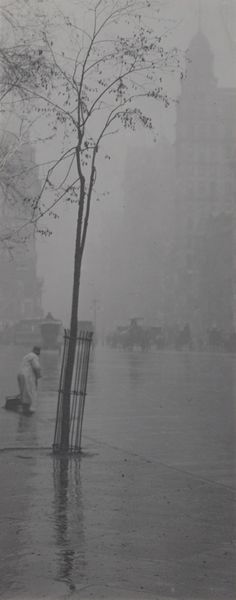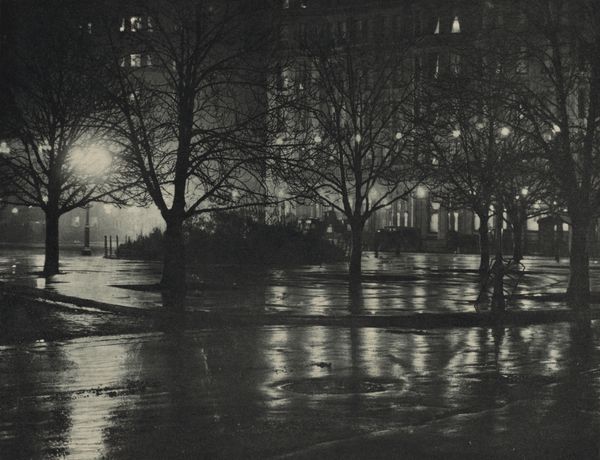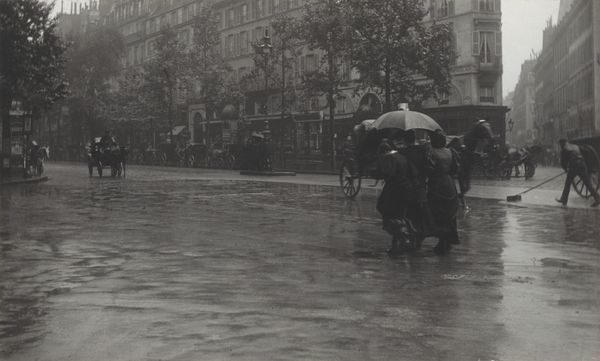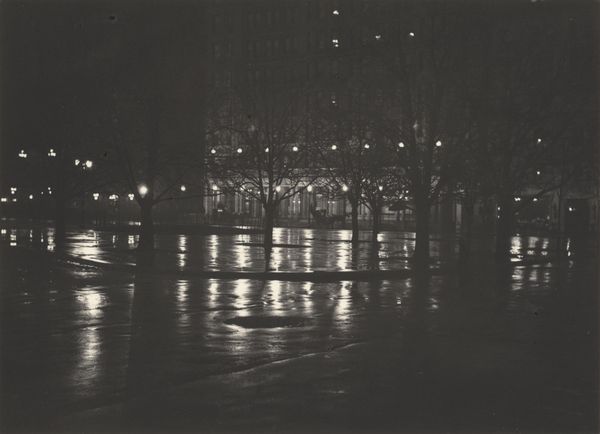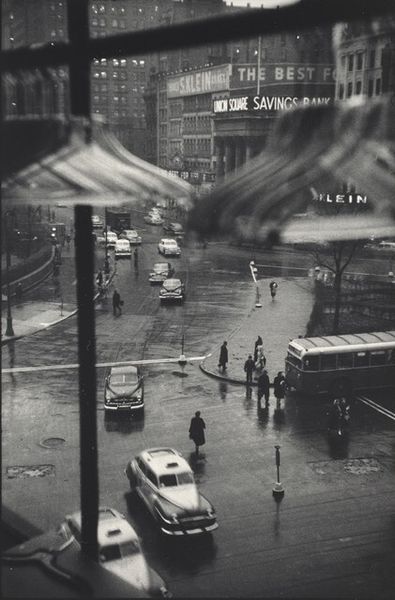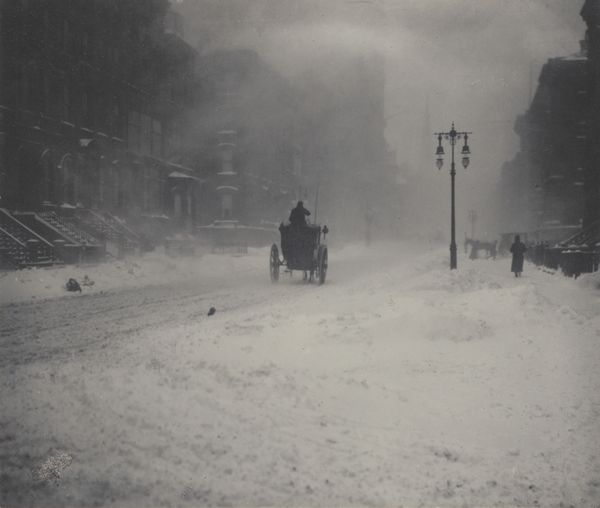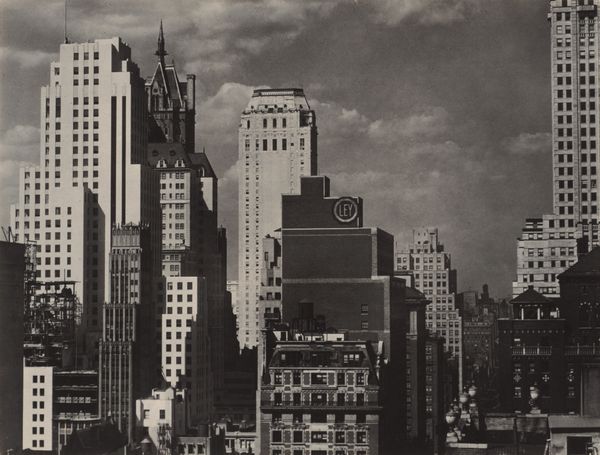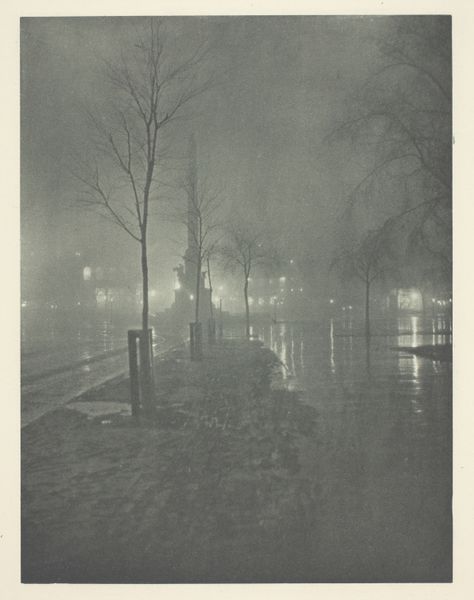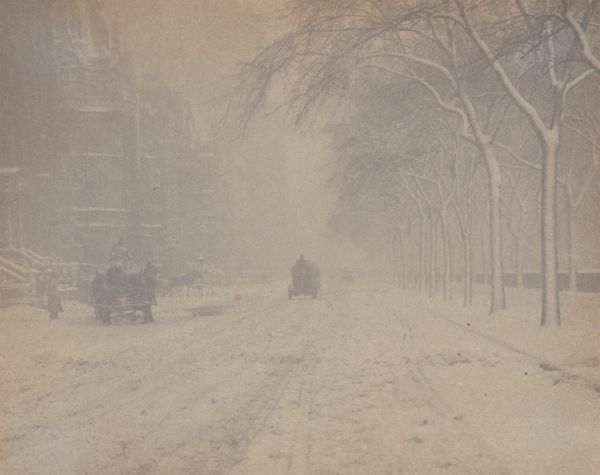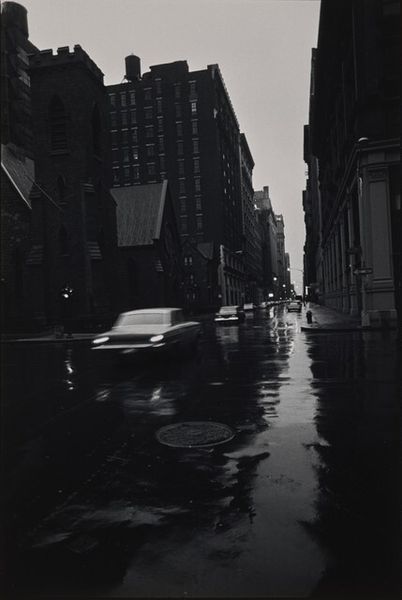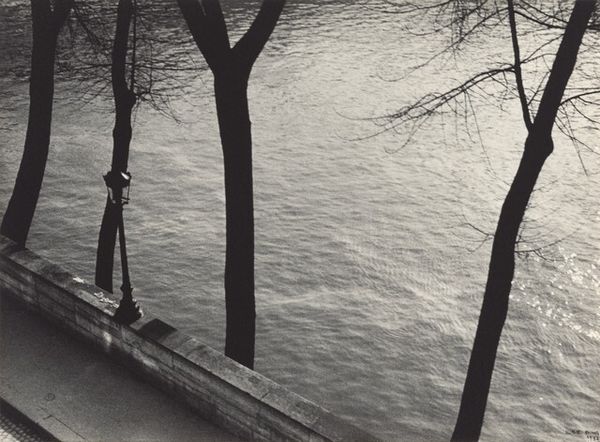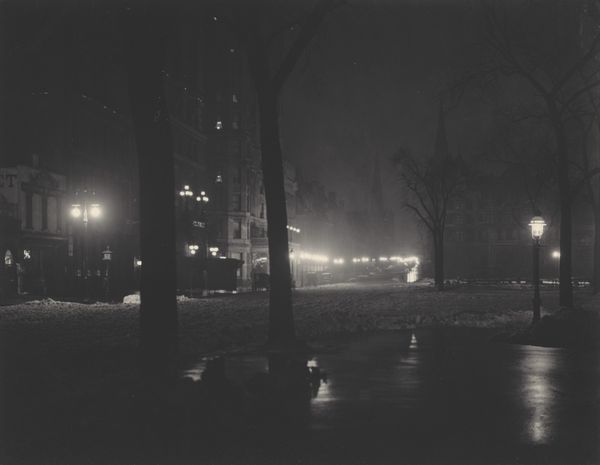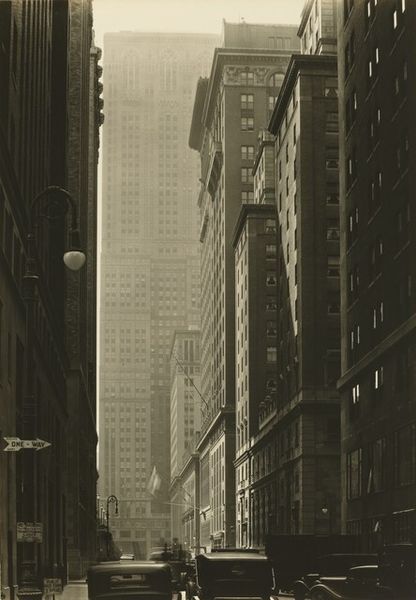
Dimensions: sheet (trimmed to image): 10.1 x 6.3 cm (4 x 2 1/2 in.) mount: 31.6 x 24.8 cm (12 7/16 x 9 3/4 in.)
Copyright: National Gallery of Art: CC0 1.0
Curator: Here we have Alfred Stieglitz's photograph "Street Sweeper and Little Tree," likely taken sometime between 1900 and 1932. It's a scene of urban life captured in a soft, almost dreamlike way, utilizing the photography medium to create what some have labeled as 'landscape photography' in a cityscape environment. Editor: It's immediately striking. The subdued tones evoke a melancholic feeling, doesn’t it? And the bare trees reaching into the mist – they feel almost vulnerable against the implied weight of the city around them. Curator: Indeed. Stieglitz was a pivotal figure in establishing photography as a legitimate art form. He wasn’t just documenting; he was offering his subjective experience. His images frequently challenge how viewers should look at the modern city and its inhabitants. The social classes within are easily observable in the broader sense. Editor: That lone street sweeper. Notice the uniform and posture; such a strong visual contrast with the surrounding society members riding on carriages! The artist uses common, daily life symbols with this work, which, along with the city life, represents this period with so many people moving toward more densely packed settlements. It almost acts as a memorialization for what was. Curator: Absolutely. And let’s consider the title: "Street Sweeper and Little Tree." He deliberately juxtaposes the ephemeral, transient presence of the man with the enduring potential of the tree. Editor: It feels like Stieglitz uses that tree as a stand-in for resilience. Encased to support life in a big-city landscape, surrounded by cold, hard roads, this symbolic gesture connects the city streets to humanity as much as any individual worker within it. Curator: Precisely! Stieglitz’s vision captures an urban impression but is more than just a photograph of a street scene. It invites consideration of modernity and society’s structural hierarchies during a critical historical and artistic epoch. Editor: I see this photograph as capturing a poignant moment in an ongoing negotiation. There is such powerful emotional resonance evoked in this work due to the masterful usage of symbolic themes of change, human imposition on nature, and resilience of both man and earth.
Comments
No comments
Be the first to comment and join the conversation on the ultimate creative platform.
